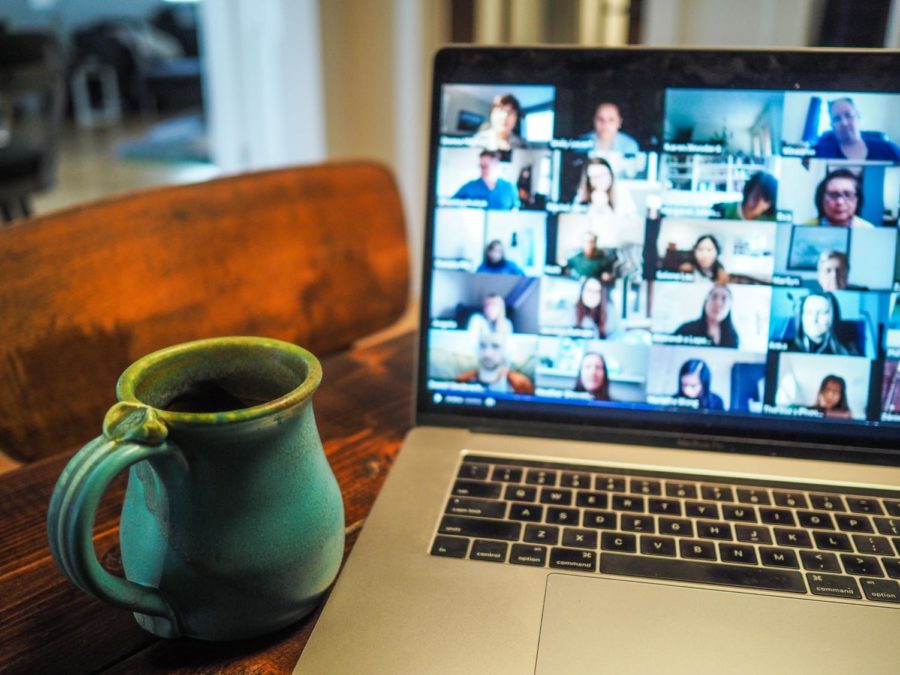Students navigate through Zoom fatigue
Zoom fatigue, or Zoom burnout, refers to the mental exhaustion some people feel as a result of using virtual meetings for a prolonged period of time.
April 20, 2021
When the COVID-19 pandemic began, students’ lives transitioned online overnight.
Virtual meetings through platforms like Zoom and Webex have skyrocketed in the past year, but this new normal has come with a consequence.
Many students have reported struggling with a phenomenon called Zoom fatigue.
Zoom fatigue, or Zoom burnout, refers to the mental exhaustion that some people feel as a result of using virtual meetings for a prolonged period of time.
“I think Zoom fatigue is when you can’t put any more effort into the Zoom call … you can’t stare at the screen any longer,” said Nicole Embree, a junior in child, adult and family services.
The overuse of virtual meetings in lieu of in-person interaction can be a source of stress for some people because they make communication more difficult.
According to a study by Stanford researcher Jeremy Bailenson, there are four reasons why we experience fatigue from video conferencing.
He cites an “unnatural” amount of eye contact with others, seeing yourself on camera constantly, lack of physical mobility and lack of nonverbal cues as the main causes for Zoom fatigue.
To combat some of these issues, Bailenson suggested more meetings be conducted with cameras off or with breaks that allow participants to turn off their video and move away from the screen.
Elizabeth Parra, a sophomore in animal science, said moving during a virtual meeting can help her combat Zoom fatigue.
“If I don’t have to have my face on the Zoom camera, I’ll try to get up and do some chores or something productive,” Parra said.
Theodore Bong, a senior in animal science, said going for a run helps him to combat Zoom fatigue.
According to Psychiatric Times, physical activity is associated with about a 40 percent reduced risk of fatigue.
Lack of motion during Zoom calls can affect students’ physical health, resulting in eye strain, back pain and other symptoms.
“Because of the new learning system, I have developed back problems and I have to go to physical therapy for it,” Parra said. “Sitting in the same position for hours on end can’t be good for anyone.”
Parra said Zoom fatigue impacts her both physically and mentally.
“Biologically, we are not meant to be looking at a screen; it hurts our eyes and our brains,” Parra said. “Mentally, it’s just draining. It’s not fun; you don’t make personal connections.”
Personal connections can be more difficult to make in a virtual setting due to the unnatural method of communication.
Nonverbal signals, such as gesturing or facial expressions, are difficult to perceive in a virtual setting. These barriers make communication more difficult and less rewarding, heightening Zoom fatigue symptoms, according to the Psychiatric Times.
Increased distractions and multitasking during online video conferences can further contribute to Zoom fatigue because it is more difficult to maintain interest in the task at hand.
Bong said his productivity has been impacted by online learning and excessive Zoom calls.
“I’m a lot less motivated, and I feel like the efficiency of my learning has dropped dramatically,” he said.
Bong said “the monotony of sitting in front of a screen” is the most draining part of video conferencing.
Embree said she puts more effort into her in-person classes because it is easy to get distracted during her Zoom classes.
“If I’m just on my computer all day, I get sad or bored or lonely,” Embree said. “I’m looking forward to more in-person classes next semester.”







